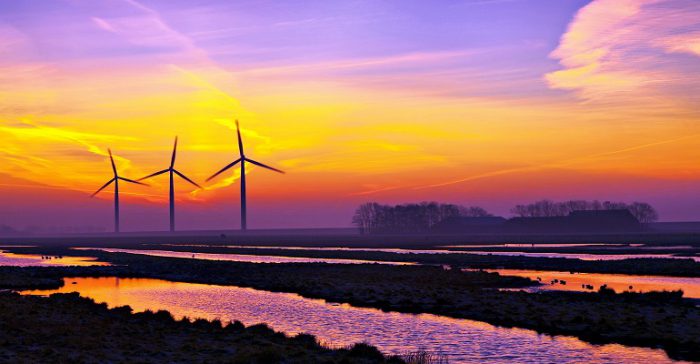Ryan Pollin, ERS, for Zondits
Denmark is famous for its wind resource, and the small country routinely breaks record after record for wind energy and power records. Forty-two percent of Denmark’s electricity came from wind over the entire year of 2015, with surplus power exported to its European neighbors during 16% of those days! Denmark has exported in electricity in volumes as much as 40% of its internal demand, and is the 6th-most energy-secure nation in the world because of it all. Enough said: they are a clean technology leader, so it’s only natural to look to them for deployment solutions.
Let’s contrast this with the United States, where wind made up just 4.4% of total electricity in 2014 (although that figure will grow, as 41% of all new capacity additions are wind plants), and we’ve yet to power on our first offshore wind turbines despite ample resources. The difference appears to be politics, where local opposition tends to sue any prospective wind facility until it’s dead. Is there something we can learn from those Danes about finding community support for wind? Why yes, of course there is.

The Danish Renewable Energy Act and associated legislation mandates that at least 20% of any wind turbine project be available for public ownership, rather than owned 100% by the developer or utility. Shares are publicized through local newspapers in increments of kWh generated, and priority is given to residents who live closest to the project. Also, the legislation demands that no profit is made on top of that 20% of community shares, which ensures that they are available at a fair price. Middelgrunden still serves as the great example, where the project ownership was split between the residents in a specialized cooperative and the utility, which meant that nobody was left to oppose the project!
Does this sound like some socialist scheme to ruin profits and tank the corporations? Obviously not, since wind has become the strongest energy sector in the country (which the statistics above certainly support). This rule allows residents to become shareholders in each of these turbine projects, not only helping to cover project costs with an up-front investment, but also to hold a vested stake in the success of the project. This localized support from the citizenry lays the groundwork for community-supported projects that do right by locals and developers alike.
What would it look like if an ownership stake were offered to the residents of Cape Cod who rejected the Cape Wind project? Would they have sued against the project 30-odd times, or been satisfied with the dividends?
